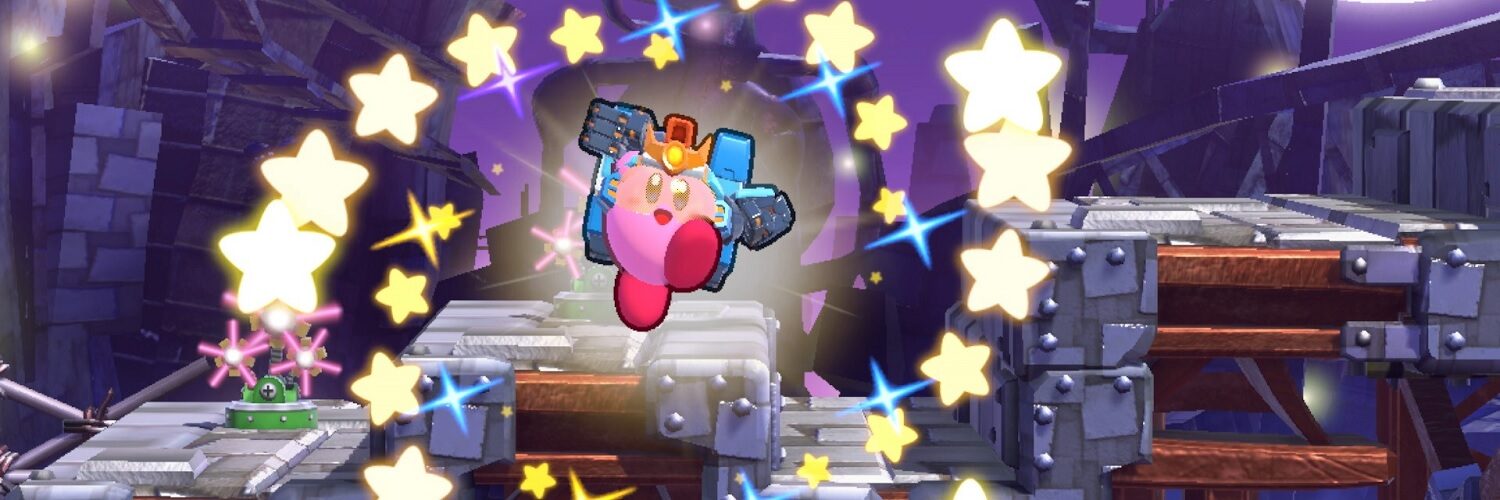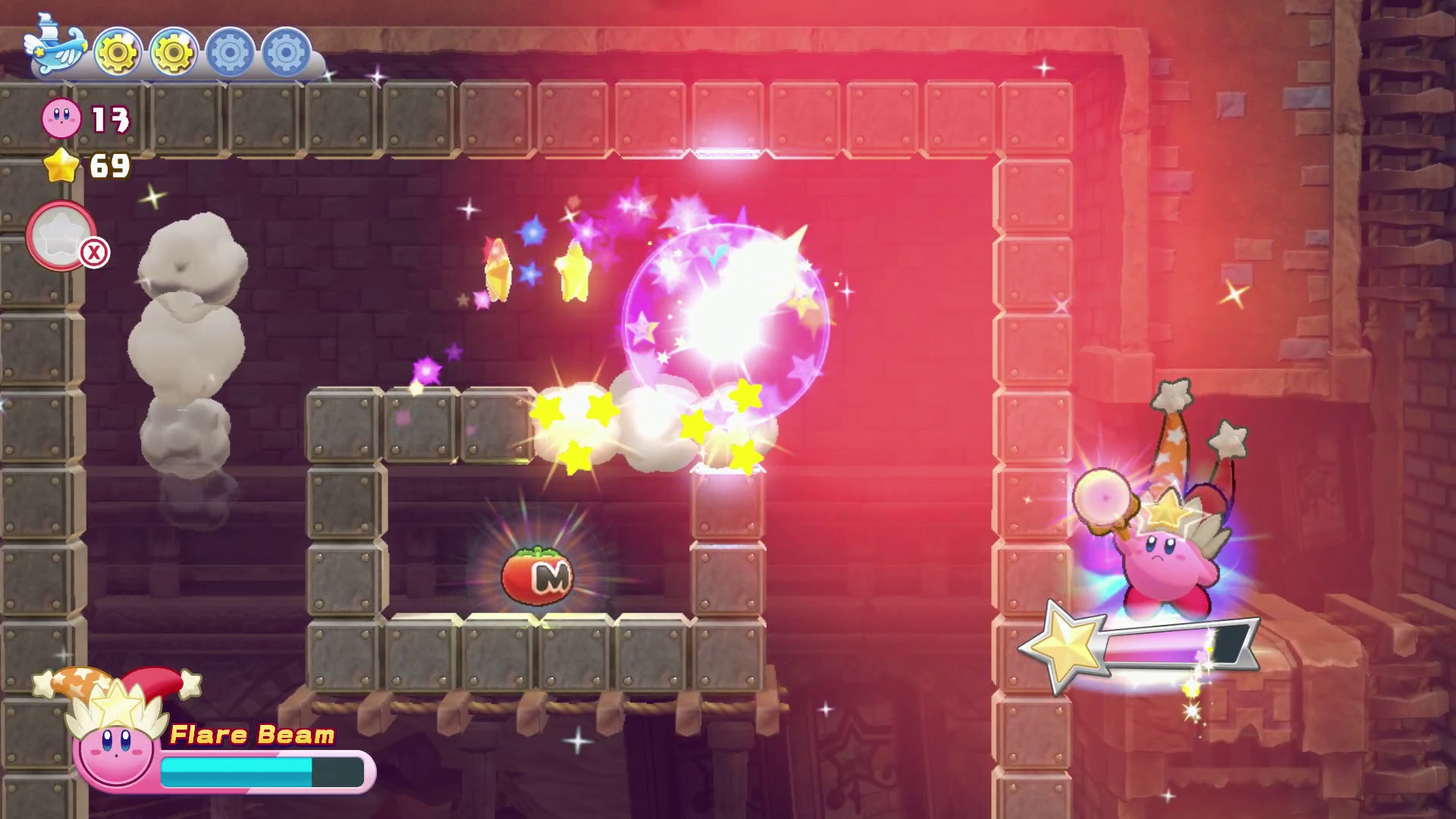
Kirby’s Return to Dream Land Deluxe Switch Review
Nintendo has been on a roll with bringing their older titles from the last few consoles and tweaking them for the better. They even sometimes throw in some additional content for good measures, which helps to bring back old fans. This has happened to titles such as Mario Kart 8 (Wii U), Captain Toad: Treasure Tracker (Wii U), Hyrule Warriors (Wii U), The Legend of Zelda: Link’s Awakening (Game Boy) and Metroid Prime (GameCube). Even the future looks bright with enhancements, as Advance Wars 1+2: Re-Boot Camp (initially GBA) is due soon, but before that, the latest in Nintendo’s remake restoration is Kirby’s Return to Dream Land Deluxe, a remaster of Kirby’s Return to Dream Land (known as Kirby’s Adventure Wii in Europe) which initially released on the Wii back in 2011.
The general summary remains the same as the Wii title, meaning the Deluxe edition takes Kirby on an adventure to find parts that have broken off from a dimension travelling spaceship known as the Lor Starcutter. Its pilot, Magolor, is distraught and pleads to Kirby and his mates to find the five missing pieces of the ship, plus any energy spheres to help power up sections inside of the spaceship. These energy spheres unlock challenge rooms for extra content. Kirby being the good samaritan he is, gladly helps and trots on an adventure to find all these parts, plus with a reward to ride on the spaceship at the end of it all, who would not want to help the little fella? As fans will know, Kirby’s plots are there to set up the adventure, not to tell a story, so do not expect much other than a few snippets of dialogue after beating each chapter’s boss. It does mean the player gets to view some nice-looking environments that set the themes for the game’s 2D platforming.

Kirby’s Return to Dream Land Deluxe is what we know as a classic Kirby game; a 2D platformer. That jumping with the skill to float in the air, that sucking of blocks and enemies and spitting them out or the many abilities that can be consumed from enemies by swallowing them and transforming Kirby into many forms. These are his signature moves, and they are at some of their best here. All the classic forms are here, Sword, Stone, Ice, Parasol, Cutter, Beam, Bomb, and many others, but for the Deluxe version two more were included; Sand and Mecha. Sand, while making Kirby look like he is trying to turn into Goku with his Super Saiyan sand-based hair, is actually not all that exciting, acting similar to a couple of other abilities, just with a sand theme. Mecha, on the other hand, is way more exciting, coming with an array of various moves, such as guns, electric fists, mines and flamethrowers. It makes the Mecha ability a versatile kit to have.
In total, there are 26 abilities to steal from various enemies, with some of the oldies given a few tweaks to give them unique options. Having this many means that the action is constantly switching move sets, giving Kirby a variety of moves to tackle the unsophisticated AI enemies throughout the game’s stages. On top of that, there are five super abilities that act as more powerful versions of their existing forms, in essence, making them fill the screen to destroy all the enemies and some of the environment to reveal hidden doors.

Kirby games always seem to have a similar common attribute; they are easy to play and lack any real difficulty in the beginning. Kirby’s Return to Dream Land Deluxe is in the same boat. This is not a challenging game, and for about three-quarters, is a breeze to get through, with deaths coming from not paying attention to the platforming and falling down into death holes. Even the boss fights are easy to beat. The abilities make them much easier, as without an ability, Kirby has to suck in stars that fall out of the boss once they perform certain actions and these need to be shot back at them. Having an ability means ignoring this playstyle and spamming the boss with whatever moves Kirby has available. It removes the waiting aspect and boils down to how fast you can smash an attack while dodging the enemy.
On completion, a harder difficulty unlocks that makes Kirby have less damage and bosses have more health and attack patterns, which would have been nice to have at the start of this remaster, as fans will have already beat the normal mode previously and now have to do it again before gaining access to what I would call a more standard difficulty for a platformer. Amusingly, there is also an easier difficulty included, “Helper Magolor”, which enables the alien to give Kirby items and abilities at certain points in the stage. Magolor can also stop Kirby from dying when falling into bottomless pits by dragging the hero back out. This mode is clearly for very young kids, offering a family-friendly cooperative experience, but I advise anyone to leave it off if you do not fall into that category.

That said, even if the challenge is missing for most of the standard game mode, there is something enjoyable about some stress-free platforming, especially when playing with three other people; as they say, playing with friends often makes everything better. Kirby’s Return to Dream Land Deluxe is fun, no doubt about that, and as the level design begins to expand past its simplicity and bring in its more inventive puzzle platforming and abilities then it becomes a blast as you begin to appreciate the developer’s imagination. It is probably past the halfway mark when the levels begin to make sure you are paying attention to what abilities Kirby must use to get past obstacles. This could be using Kirby’s Fire ability to melt ice cubes, using the weight of Stone to slide down slopes faster or Hi-Jump to reach hard-to-reach places and secrets. There are even puzzles that require one to have a watchful eye, as Kirby is shot up a stream of water and must follow which passageway leads to a secret when opening specific sealed pathways on the way back down. The inventiveness of its stages takes away what could have easily become stale if it decided to keep its base platform barebones and straightforward.
Apart from the two new copy abilities, some new challenges in Magolor’s spaceship, and “Helper Magolor”, all the mentioned elements so far are what existed in the Wii release, so what is new for Deluxe? Of course, the visuals are one of the clear differences. Enhancing everything up to high definition gives this game a new coat of paint. It is not a “wow” factor difference, but the bright colours, better textures and soft cel-shade visuals stand out more with the sharper image, and of course 60fps, a standard for 2D Nintendo platformers.

A brand new epilogue has the player in the role of Magolor, dubbed “Magolor Epilogue: The Interdimensional Traveler”, which becomes available once the main game has been beaten, and can also be played with up to four players. This new mode puts Magolor through 20+ new stages with remixed enemies and bosses as the player must restore Magolor’s abilities to use them within his journey, as in the beginning, all his abilities are stripped away. While he does not play exactly Kirby, his move set eventually becomes similar due to the powers he unlocks. The levels are designed around Magolor’s powers and depending on how well the level was beaten, the player is awarded magic points to upgrade the abilities. There is a scoring element behind this, with each level having a platinum award for the best players, giving reasons to replay the levels. This puts a challenging spin on the formula compared to Kirby’s main adventure, and it is a neat inclusion from Nintendo to throw in this mini adventure as a bonus reward for beating the game.
The other big addition is Merry Magoland, a theme park that holds 11 various mini-games run by the crash-landed alien Magolor. This consists of a couple of new and a few returning mini-games from other Kirby titles, such as Bomb Rally from Kirby: Nightmare in Dream Land or the boulder punching Crackity Hack from Kirby & The Amazing Mirror. This serves as a party distraction for friends, playing Mario Party-type games to see who is the best among your bunch of friends. All these games are easy to understand and play, usually revolving around timing, moving or button mashing to make it simple for anyone to pick up and play. Playing these games adds stamps to a stamp card that can be used to eventually unlock masks to stick on Kirby…a bizarre way to play dress up with Kirby with some frightening outcomes.

Kirby’s Return to Dream Land Deluxe is a charming remaster for the Nintendo Switch that puts a happy smile on anyone with its colourful visuals and cutesy presentation. Fans who enjoy Kirby might want to experience all the new additions in this re-release, but with the game being charged at full price, you might want to ask if all the new stuff is worth the asking price. For new Kirby fans that found the pink blob through other games on their Nintendo Switch, then this will be an embodiment of pure fun for you, bringing all the good and enjoyment Kirby can offer for a group of friends sitting around the TV. Be warned, the game is still overly easy on its standard mode, which makes the Extra Mode unlock a huge shame that it was not available from the start, but at least the level design makes up some for the lack of challenge. For people who just want to sit down after a hard day of work and relax with some entertaining platforming, then Kirby’s Return to Dream Land Deluxe is suited for such circumstances with its sweet, colourful adventure that is ideal for family fun or stress-free gaming.
